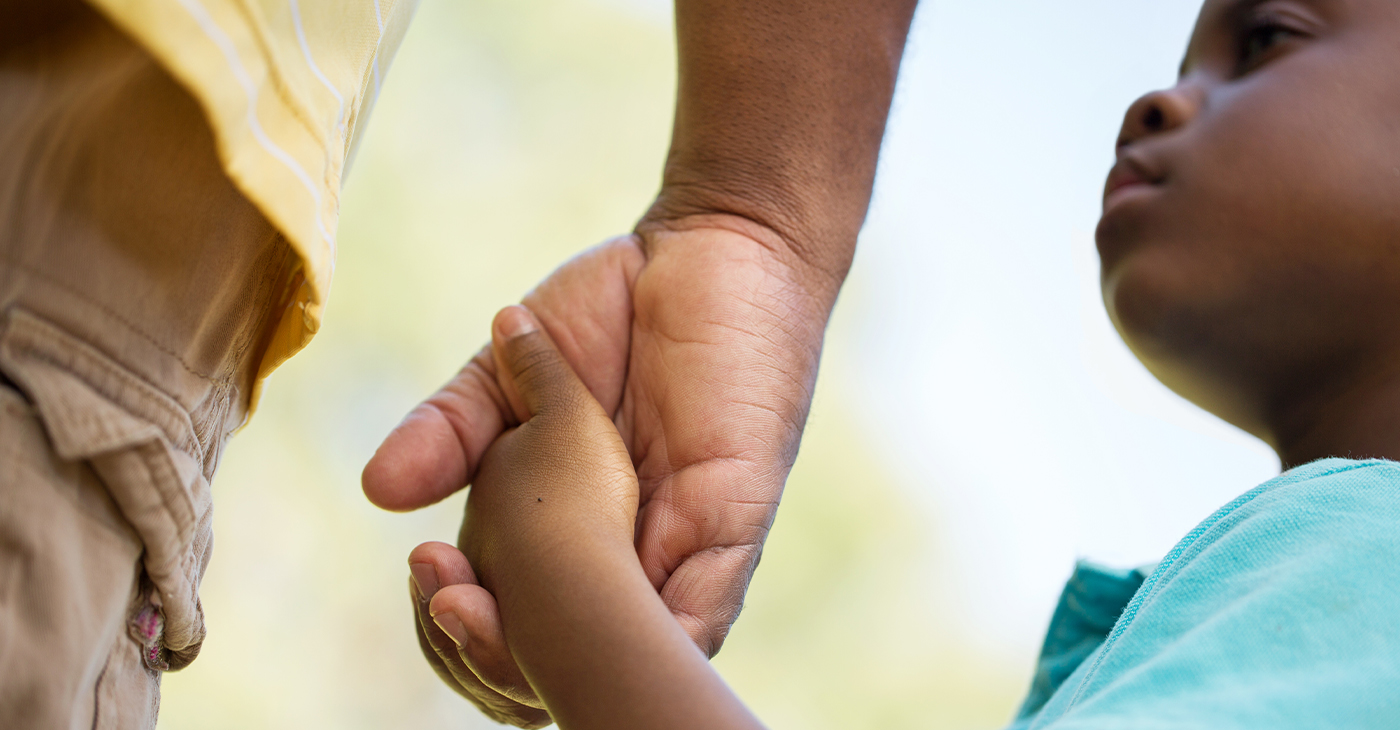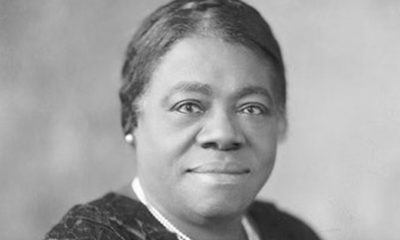Family
Diversify Your Dinner Menu
FLORIDA COURIER — Crafting quick, easy, nutritious meals is one of the most common goals for home chefs.
By The Florida Courier
Crafting quick, easy, nutritious meals is one of the most common goals for home chefs, yet it may sometimes be difficult to keep the menu feeling fresh and new. By introducing a variety of ingredients, you can broaden the horizons of your family’s dinner options.
For creative, simple, tasty family meals, consider these globally inspired recipes that highlight inventive ways to incorporate veal as a satisfying main ingredient in nearly any dish. From sandwiches to salads, the versatility of an ingredient like veal can help you build out a full menu with a wide array of protein-rich dishes. With recipes like these, veal can become a staple on your family’s weekly menu.
Visit vealmadeeasy.com for additional recipes and complete nutrition information.
CLASSIC VEAL PARMESAN SANDWICHES
Prep time: 10 minutes
Cook time: 10 minutes
Serves: 6
- 6 veal cutlets (3 ounces each)
- salt, to taste
- ground black pepper, to taste
- 1/2cup all-purpose flour
- 1 egg wash
- 1 cup breadcrumbs
- 1 cup vegetable oil
- 12 tablespoons tomato sauce
- 3 tablespoons Parmesan cheese, grated
- 6 slices provolone cheese
- 6 slices mozzarella cheese
- 6 sub rolls
Heat oven to 350 F.
Pound each veal cutlet between sheets of parchment or plastic wrap until 1/4-inch thick. Blot veal dry.
Season each cutlet with salt and pepper, to taste. Dredge veal in flour; shake off excess. Dip in egg wash and dredge in breadcrumbs.
In large skillet over medium heat, heat about 1/8-inch oil to about 350 F. Working in batches, add breaded veal to hot oil and pan fry first side until golden brown and crisp, about 2 minutes. Turn once and pan fry second side until it reaches internal temperature of 160 F, about 1-2 minutes.
Drain on paper towels or wire rack set over baking sheet.
Add 2 tablespoons tomato sauce to each veal cutlet and sprinkle 1/2 tablespoon Parmesan cheese on top. Add one slice provolone and mozzarella cheese to each cutlet.
Place veal parmesan in oven 2-3 minutes, or until the cheese begins to melt and veal is hot. Add veal to sub rolls and serve.
VEAL, SPINACH AND TOMATO AREPAS
Prep time: 15 minutes
Cook time: 20 minutes
Serves: 4
- 1/2pound veal cutlets
- 1 teaspoon cumin
- 1/2teaspoon chili powder
- 1 1/2tablespoons olive oil
- 2 green onions (1 ounce each), sliced
- 1 clove garlic, minced
- 1 can (10 ounces) diced tomatoes and green chilies
- 1/8teaspoon salt
- 2 cups packed baby spinach (about 2 1/2 ounces)
- 4 arepas (5 inches in diameter)
- 1/4cup crumbled Queso Blanco cheese (1 ounce)
Pound veal cutlets into 1/41/8-inch thickness; cut into 1-inch strips. Place in bowl and toss with cumin and chili powder.
In 12-inch, nonstick skillet over medium heat, heat olive oil. Cook veal strips 1-2 minutes. Remove veal to plate; keep warm. In same skillet over medium heat, cook green onions and garlic 2-3 minutes. Add tomatoes and salt; over high heat, heat to boil. Reduce heat to low; simmer 5 minutes until slightly reduced.
Stir in spinach. Cook 3-4 minutes, or until spinach wilts and is tender. Return veal to skillet; heat through.
To serve, heat skillet or griddle over medium heat. Toast arepas on each side until lightly browned and heated through, turning once.
Cut each arepa in half horizontally. Top bottom half of each arepa with veal mixture. Sprinkle each with cheese; replace arepa tops.
VEAL ZA’ATAR FLATBREADS
Prep time: 15 minutes
Cook time: 25 minutes
Serves: 4
- 1/4cup za’atar seasoning
- 3 tablespoons extra-virgin olive oil, divided
- 1 package (10 ounces) flatbreads
- 1 onion (4 ounces), finely chopped
- 1/2pound ground veal
- 1/4cup crumbled feta cheese
- 1 tomato (6 ounces), cored and chopped
- chopped parsley, for garnish
Heat oven to 425 F. In small bowl, combine za’atar seasoning and 2 tablespoons olive oil.
Spread about 1 tablespoon za’atar mixture on each flatbread. Arrange flatbreads on large baking sheet; set aside.
In 10-inch skillet over medium heat, heat remaining olive oil. Cook onion 4-5 minutes, stirring occasionally. Add veal and cook 4-5 minutes until no longer pink, stirring to break up meat.
Remove skillet from heat; stir in feta cheese. Spoon 1/4 veal mixture onto each flatbread. Sprinkle each flatbread with tomato. Bake 8-10 minutes, or until hot. Sprinkle each flatbread with parsley.
MEDITERRANEAN GRILLED SALAD
Prep time: 20 minutes
Cook time: 10 minutes
Serves: 4
- 1 large orange (12 ounces)
- 1/2cup Italian salad dressing
- 1 teaspoon Dijon mustard
- 1 veal cutlet (12 ounces), pounded to 1/4-1/8-inch thick
- 1 bulb fennel (7 ounces), trimmed, halved and cored
- 1/2small red onion (1 1/2 ounces), thinly sliced
- 1 1/2cups cooked farro
- 2 cups packed baby arugula (about 3 ounces)
- 1 head radicchio (4 ounces), cored and torn (about 2 cups packed)
- 1/2cup toasted hazelnuts, chopped
- 1ounce Parmesan cheese
Grate 1/2 tablespoon zest from orange; reserve orange. Stir zest into salad dressing.
Use knife to remove skin and pith from orange. Use knife to cut between fruit and membrane to release each orange section. Squeeze membrane to extract 1/4 cup juice; reserve juice and orange sections.
In bowl, whisk reserved orange juice, mustard and salad dressing. Remove 1/4 cup dressing to re-sealable food storage bag. Add veal cutlets to dressing in bag. Re-seal bag and turn several times until veal is coated with dressing; set aside.
Prepare grill or heat grill pan over medium-high heat on stovetop. Remove veal cutlets from dressing; discard dressing. Grill veal cutlets 5-6 minutes, turning once. Remove cutlets from heat. Place on cutting board and cut into bite-size pieces.
Thinly slice fennel halves and place in bowl. Add red onion, farro, arugula and radicchio; toss. Add veal, orange sections, reserved salad dressing and hazelnuts.
Draw blade of vegetable peeler across surface of cheese to make thin ribbons. Toss to coat with dressing. Divide salad among four bowls.
This article originally appeared in the Florida Courier.
Community
For Cervical Cancer Month, Medical Community Focused on Education
January was Cervical Cancer Awareness Month. Physicians, advocates and others in the medical community commemorated the month by raising awareness about a form of cancer they say is highly preventable and treatable. Cervical cancer is caused by a virus called the human papillomavirus (HPV) and it develops slowly over time but can be prevented with proper care in girls as young as 13 years old.

By Magaly Muñoz
January was Cervical Cancer Awareness Month.
Physicians, advocates and others in the medical community commemorated the month by raising awareness about a form of cancer they say is highly preventable and treatable.
Cervical cancer is caused by a virus called the human papillomavirus (HPV) and it develops slowly over time but can be prevented with proper care in girls as young as 13 years old.
Sonia Ordonez, an OBGYN and gynecology surgeon at Kaiser Permanente, stated that as soon as people with cervixes reach the maturity reproductive age, they should start taking preventative measures like getting the HPV vaccine. The vaccine involves a series of two-doses for people aged 9 through 14 or three-doses for people 15 through 45 years old.
“I see a lot of young women who can’t remember or may not have gotten [the vaccine] when they were younger, or maybe got one, but we can give them the series of vaccines and restart at any point in time,” Ordonez said.
She said that cervical cancer is not the only cancer caused by HPV. Strains of the virus can also lead to throat, anal and penile cancers.
Screening is also an effective way to check for cervical cancer and should be done every three years after someone turns 21, doctors recommend. It is best to start as early as possible to catch occurrences early.
Ordonez said that this cancer is also more likely found in people of color and has led to more deaths overall.
A Mayo Clinic article published last month stated that Black women are more likely to be diagnosed and die of cervical cancer, compared to White women in the U.S.
2,000 Black women are diagnosed every year with cervical cancer and 40% die as a result.
“This disparity is not due to genetic differences among White, Black or Hispanic women, but rather related to systemic racism, access to healthcare and socioeconomic factors,” Dr. Olivia Cardenas-Trowers, a Mayo Clinic urogynecologist, said in the article.
Ordonez stated that immigrant women are also highly susceptible to the cancer, as many Latin American countries may not have accessibility to screenings or lack of insurance makes it harder for them to get tested.
Hispanic women are 40% more likely to be diagnosed with cervical cancer, and 30% more likely to die from it, as compared to non-Hispanic White women, according to the Office of Minority Health.
Family medicine physician, Joy Anyanwu, stated that the pandemic contributed to hesitancy about getting cervical cancer screenings among some women. Other factors are people’s aversion to vaccines, parents not wanting to believe that their children are or will become sexually active, and doubt about the overall effectiveness of the vaccine.
“The vaccine is very safe — over 97% effective in preventing cervical cancer,” Anyanwu said. “Even if you aren’t having sex, the earlier you start would actually help.”
Anyanwu said she understands that parents might not want to ask questions about their children’s reproductive health, but it’s a mindset that can be a barrier to having important conversation about prevention or care.
To keep families their families and communties healthy, the doctor emphasized that people should prioritize keeping up with their vaccine series and going to screenings every year.
City Government
LAO Releases Report on Racial and Ethnic Disparities in California Child Welfare System
Racial inequalities in California’s child welfare system disproportionately impact poor Black and Native American children, according to a report released April 3 by the nonpartisan Legislative Analyst’s Office (LAO). The report, which was presented to the Assembly Subcommittee No. 2 on Human Services — chaired by Assemblymember Corey Jackson (D-Moreno Valley) — states that the proportion of low-income Black and Native American children in foster care is four times larger than other racial and ethnic groups in the state.

Racial inequalities in California’s child welfare system disproportionately impact poor Black and Native American children, according to a report released April 3 by the nonpartisan Legislative Analyst’s Office (LAO).
The report, which was presented to the Assembly Subcommittee No. 2 on Human Services — chaired by Assemblymember Corey Jackson (D-Moreno Valley) — states that the proportion of low-income Black and Native American children in foster care is four times larger than other racial and ethnic groups in the state. Half of the children from each racial group has experienced some level of child welfare involvement before reaching legal age.
Jackson is a member of the California Legislative Black Caucus.
“Racial and ethnic disproportionality and disparities are present within initial allegations and persist at all levels of the system — becoming the most pronounced for youth in care,” the report states.
The disparities have persisted over the last decade across the state, the LAO found, adding that Black children living in poverty are more likely to enter foster care. State data shows that there is a correlation between poverty and foster placement in each county.
“Throughout all levels of the child welfare system, families experiencing poverty are more likely to come to the attention of and be impacted by the child welfare system,” stated the report.
Overall, the report revealed that more than half of the families affected by the state child welfare system earn $1,000 per month, significantly less than the national average of $5,000 a month.
The financial disparities highlighted in the LAO report align with existing research indicating that poverty is among the main factors contributing to the likelihood of child maltreatment. State anti-poverty programs include cash aid, childcare subsidies, supportive housing, and nutrition assistance.
Activism
Hurlbut Benevolent Foundation Teams with RichmondWORKS to Feed Families
Over 300 families in Richmond received $100 food coupons during the holidays thanks to a partnership involving a local foundation and RichmondWORKS.

Richmond Standard
Over 300 families in Richmond received $100 food coupons during the holidays thanks to a partnership involving a local foundation and RichmondWORKS.
Richmond residents Maryn and Garry Hurlbut and the Hurlbut Benevolent Foundation (HBF) Board of Directors partnered with Bouakhay Phongboupha, program manager for RichmondWORKS, to make the distribution possible.
“Bouakhay and her staff have been able to identify some of the most needy families in Richmond who could make the best use of the supplemental food over the holiday season,” Garry Hurlbut said.
The Hurlbuts are retirees and Richmond residents who are very active in the community. One of the pair’s significant contributions is starting the Richmond Tennis Association, which significantly amplified tennis participation and facilities in the city.
-

 Activism4 weeks ago
Activism4 weeks agoOakland Post: Week of March 20 – 26, 2024
-

 #NNPA BlackPress3 weeks ago
#NNPA BlackPress3 weeks agoCOMMENTARY: D.C. Crime Bill Fails to Address Root Causes of Violence and Incarceration
-

 #NNPA BlackPress3 weeks ago
#NNPA BlackPress3 weeks agoMayor, City Council President React to May 31 Closing of Birmingham-Southern College
-

 #NNPA BlackPress3 weeks ago
#NNPA BlackPress3 weeks agoCOMMENTARY: Lady Day and The Lights!
-

 #NNPA BlackPress3 weeks ago
#NNPA BlackPress3 weeks agoFrom Raids to Revelations: The Dark Turn in Sean ‘Diddy’ Combs’ Saga
-

 #NNPA BlackPress3 weeks ago
#NNPA BlackPress3 weeks agoBaltimore Key Bridge Catastrophe: A City’s Heartbreak and a Nation’s Alarm
-

 #NNPA BlackPress3 weeks ago
#NNPA BlackPress3 weeks agoBaltimore’s Key Bridge Struck by Ship, Collapses into Water
-

 Activism3 weeks ago
Activism3 weeks agoOakland Post: Week of March 27 – April 2, 2024
















































